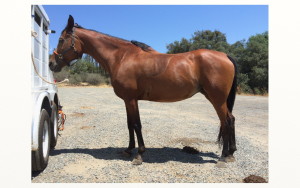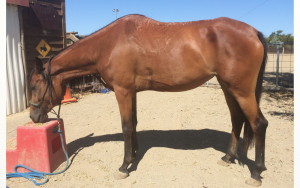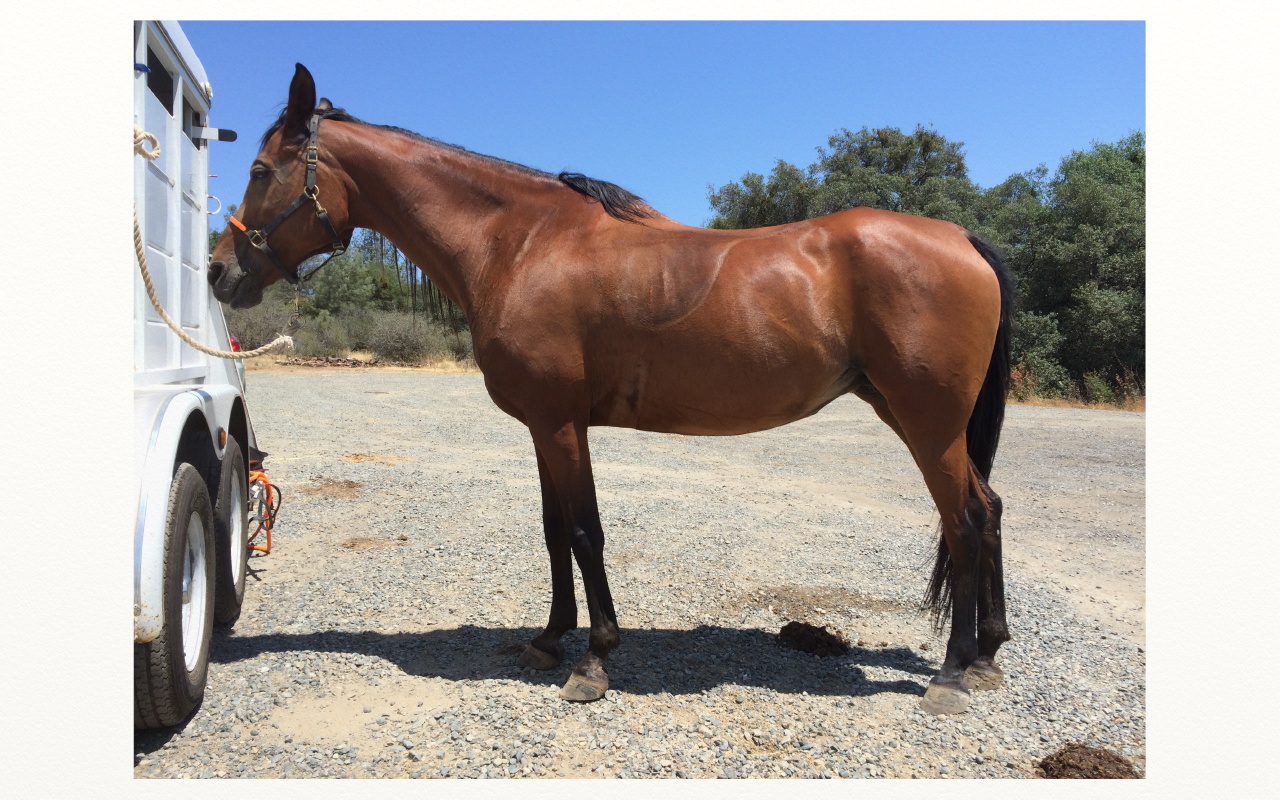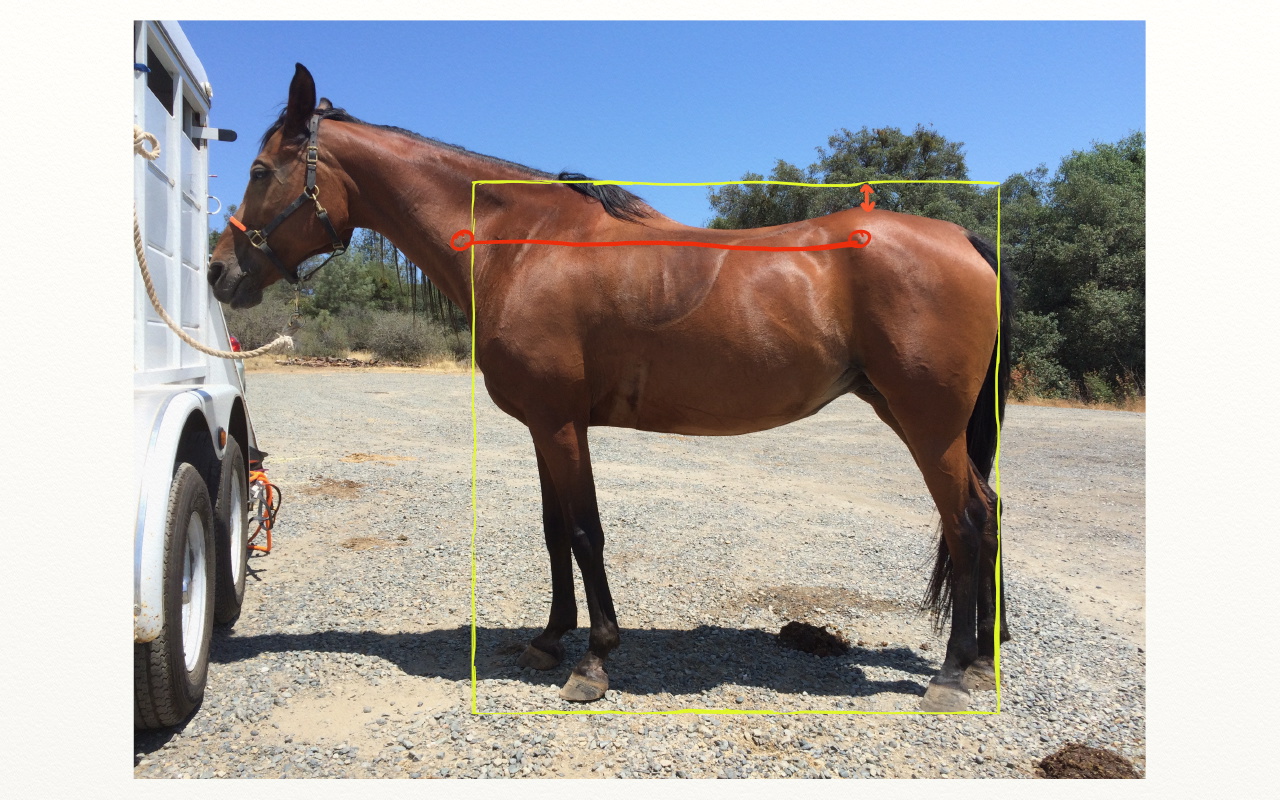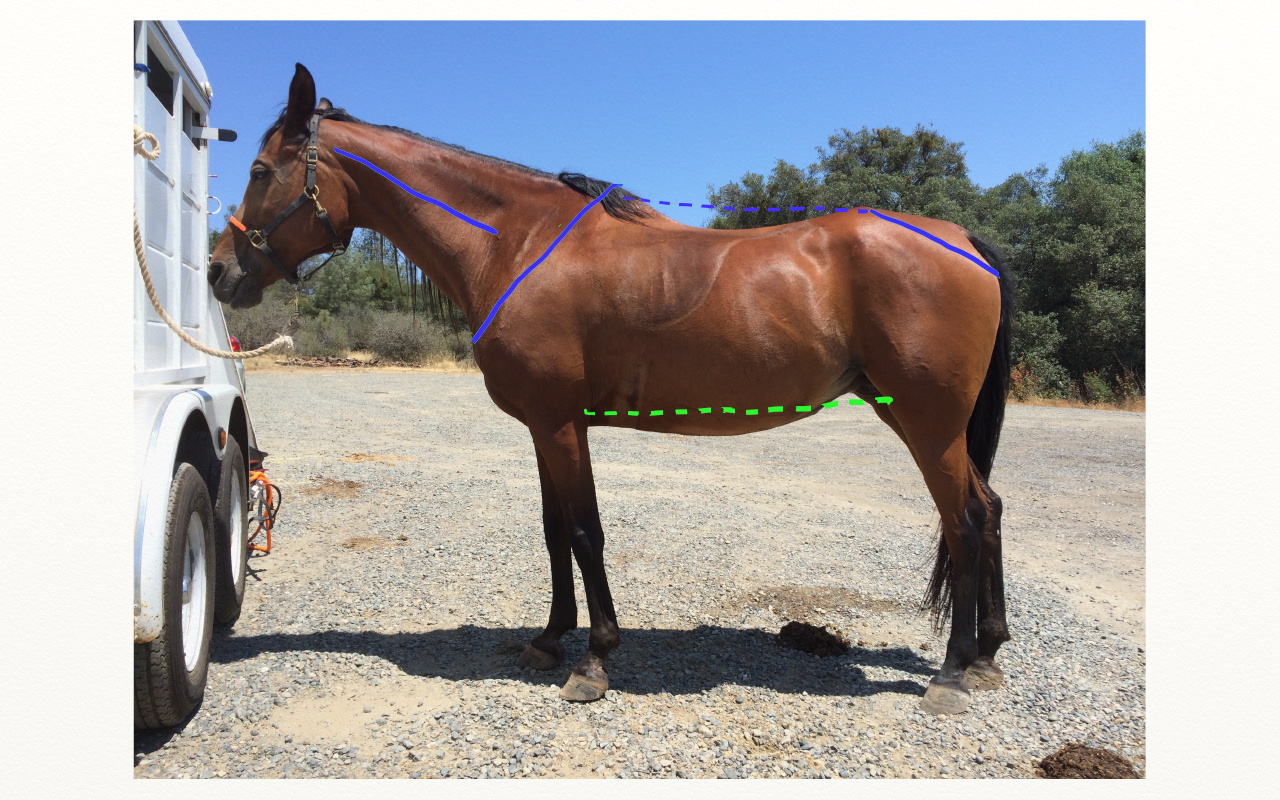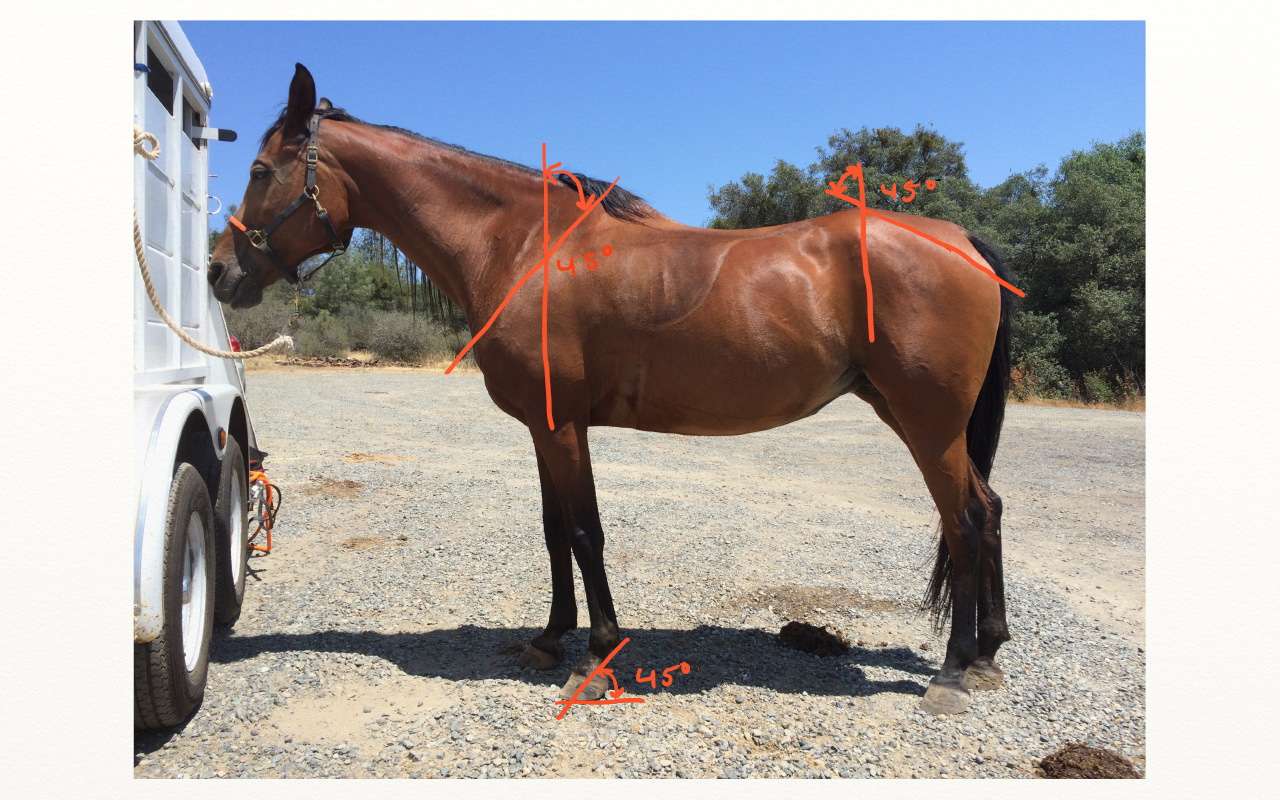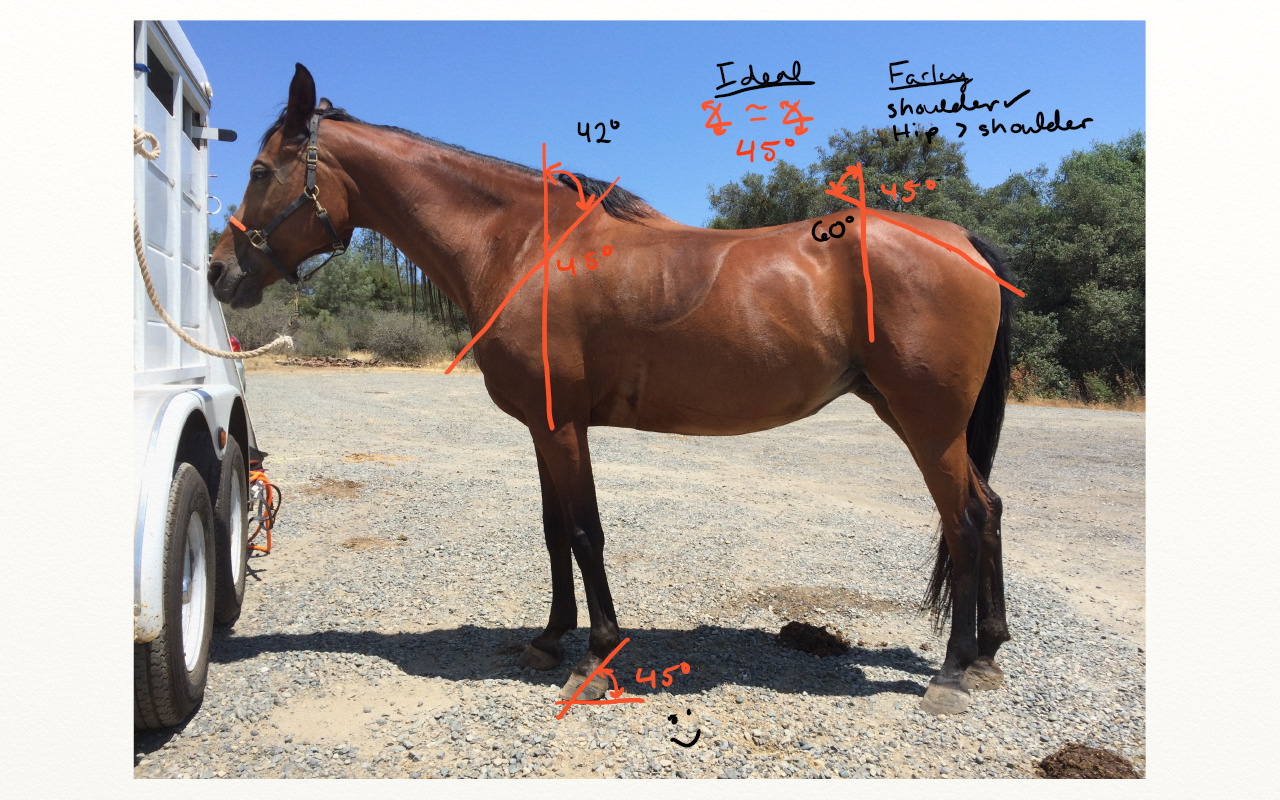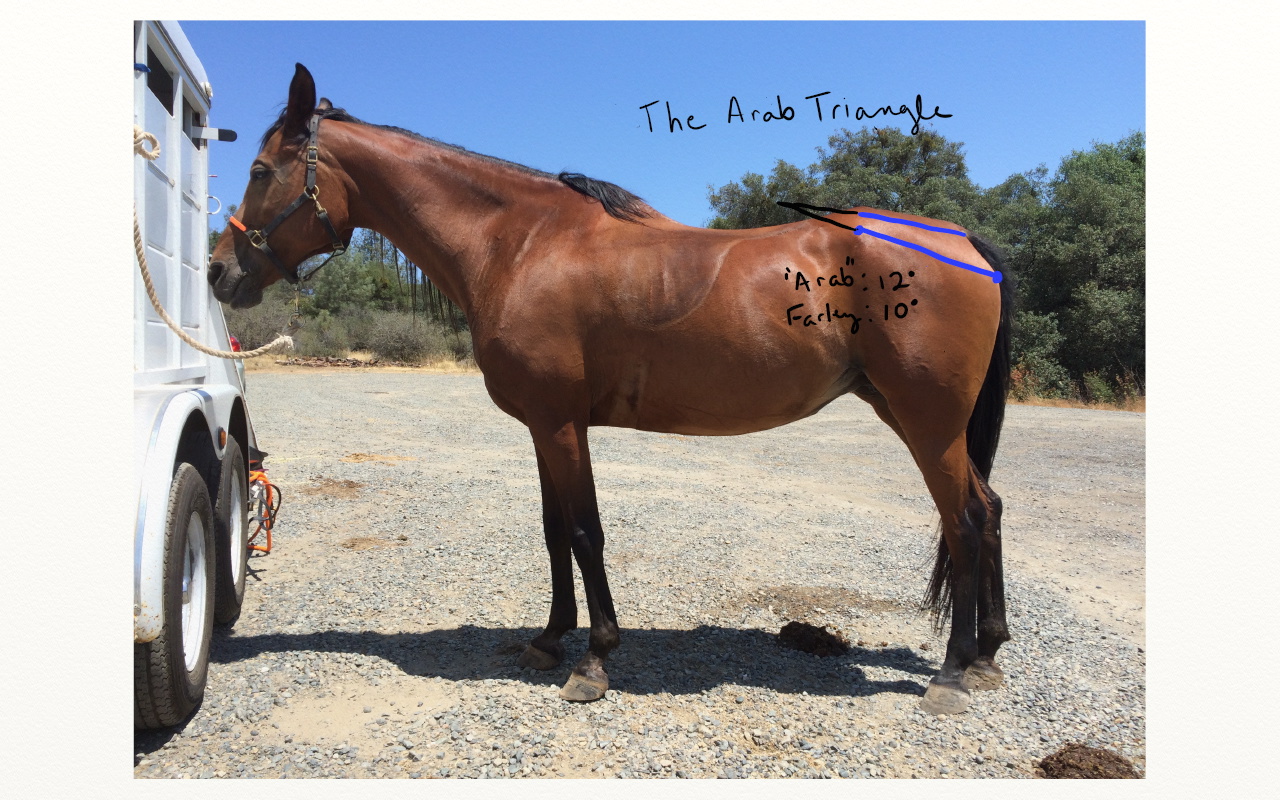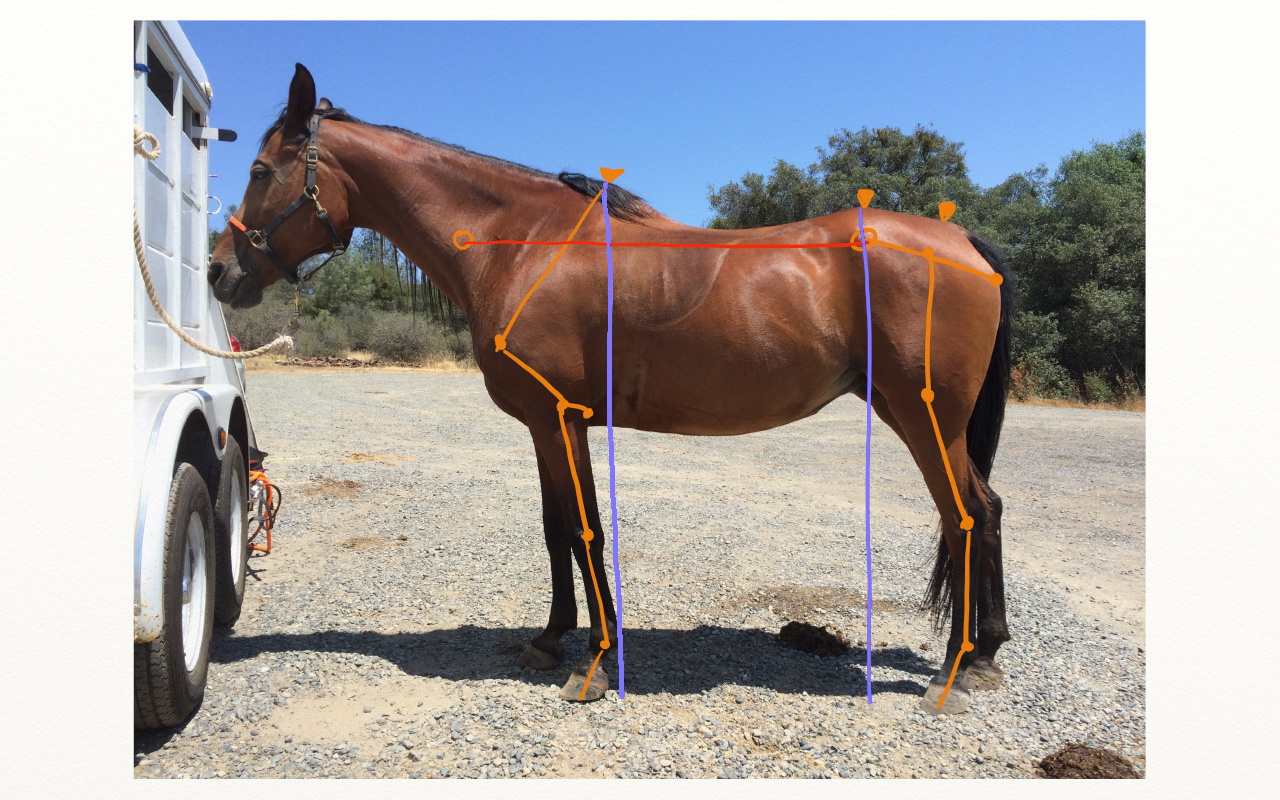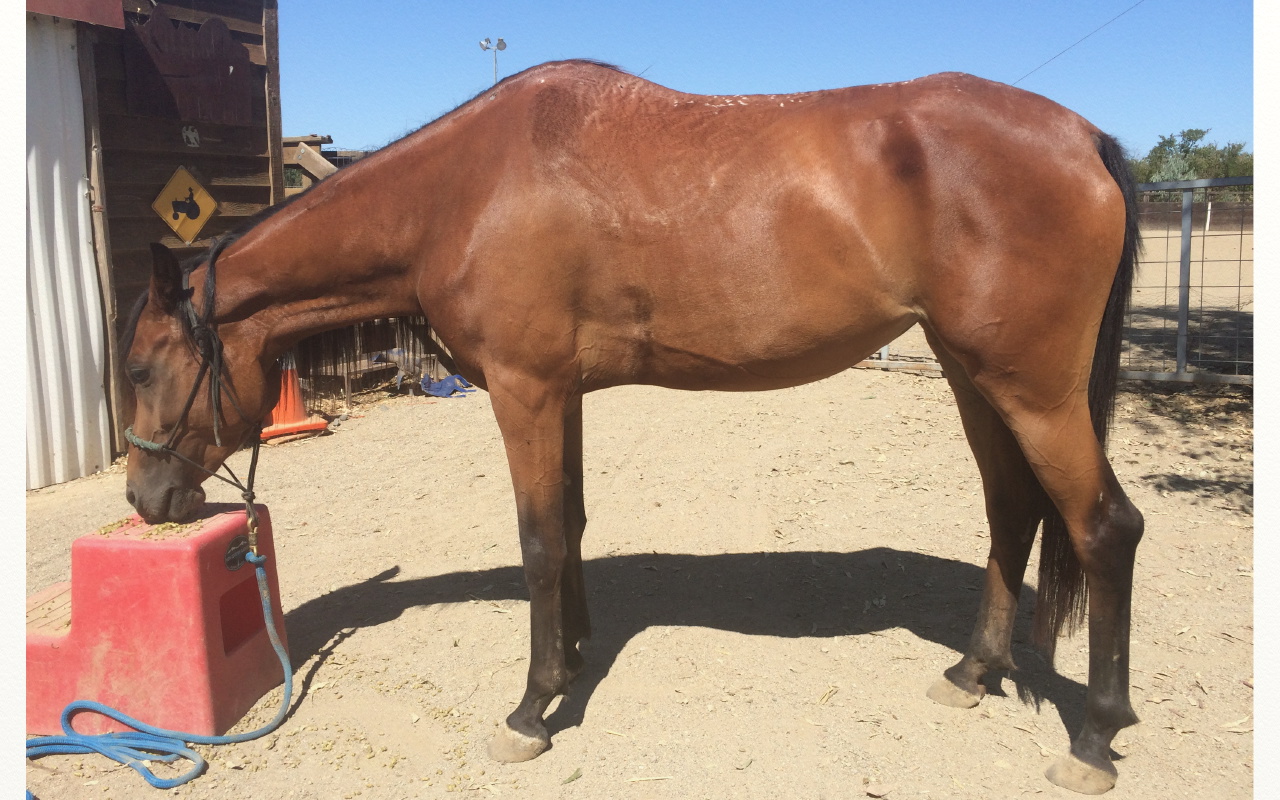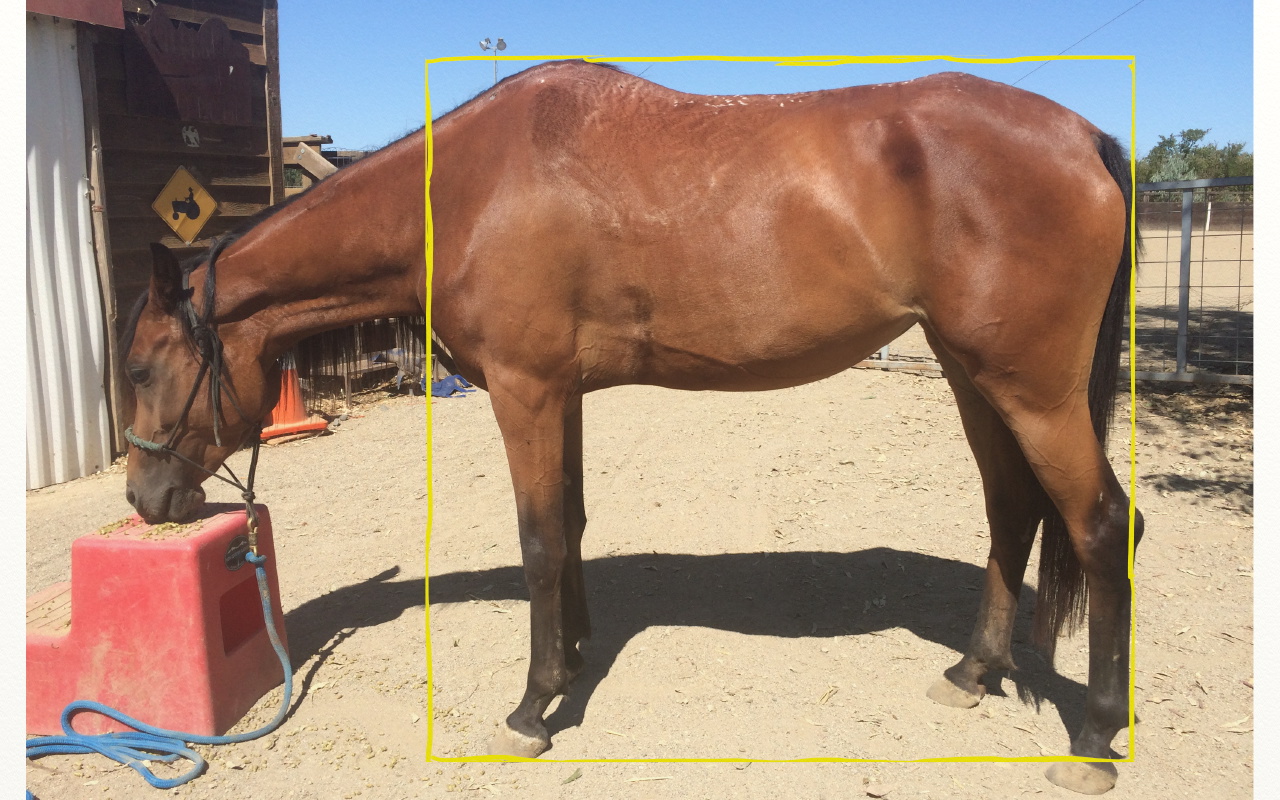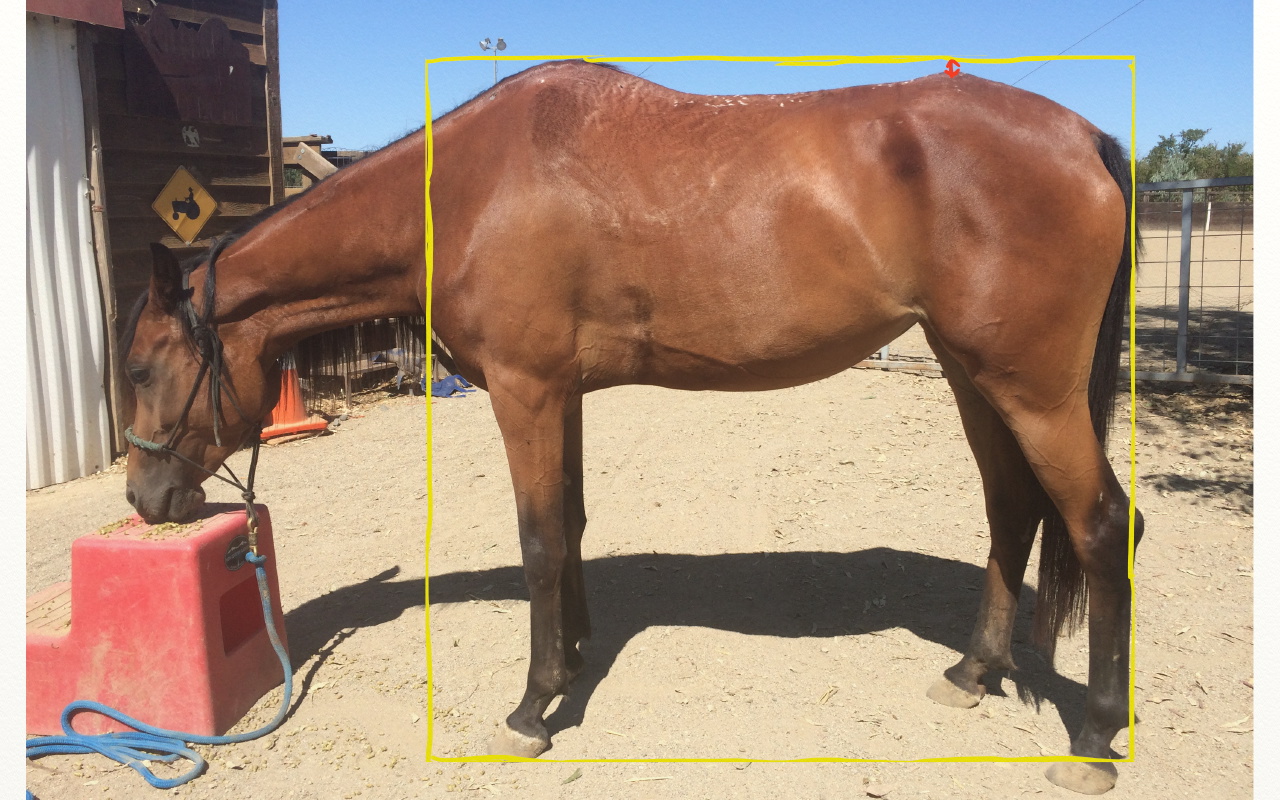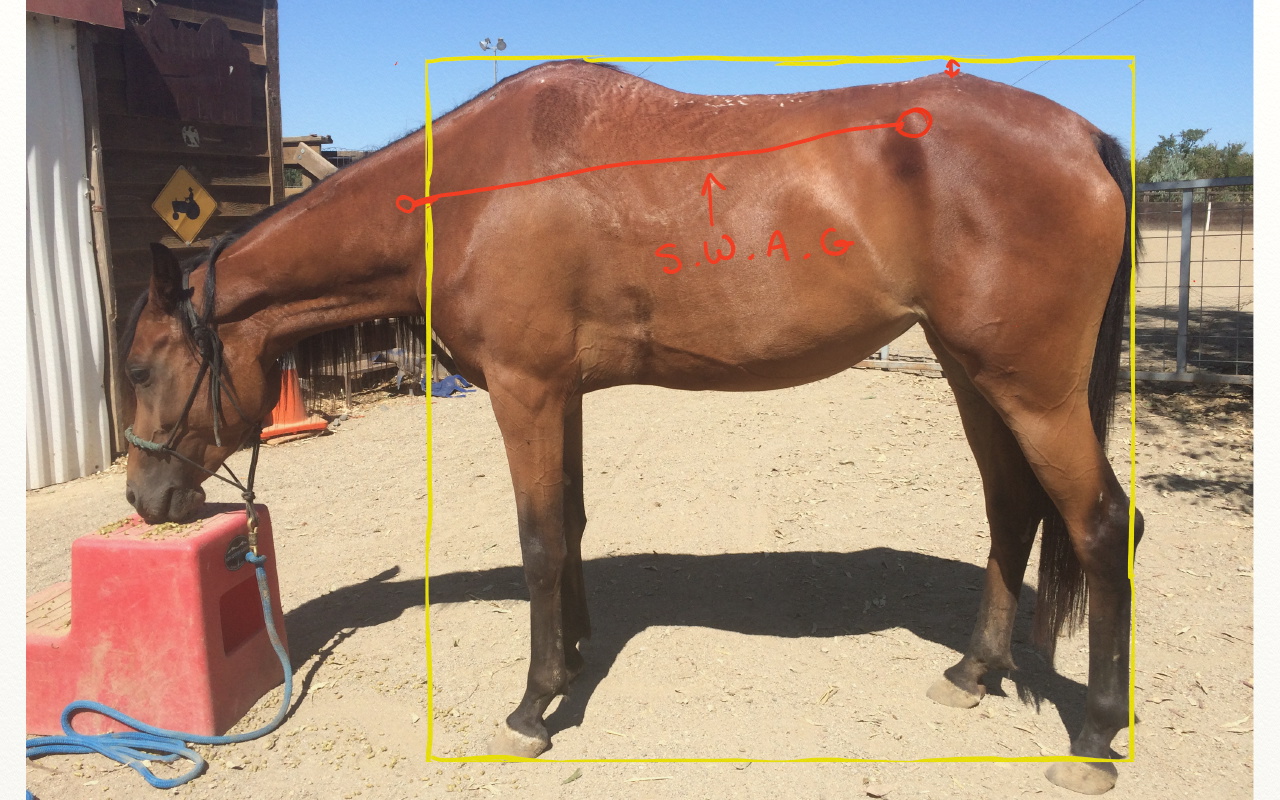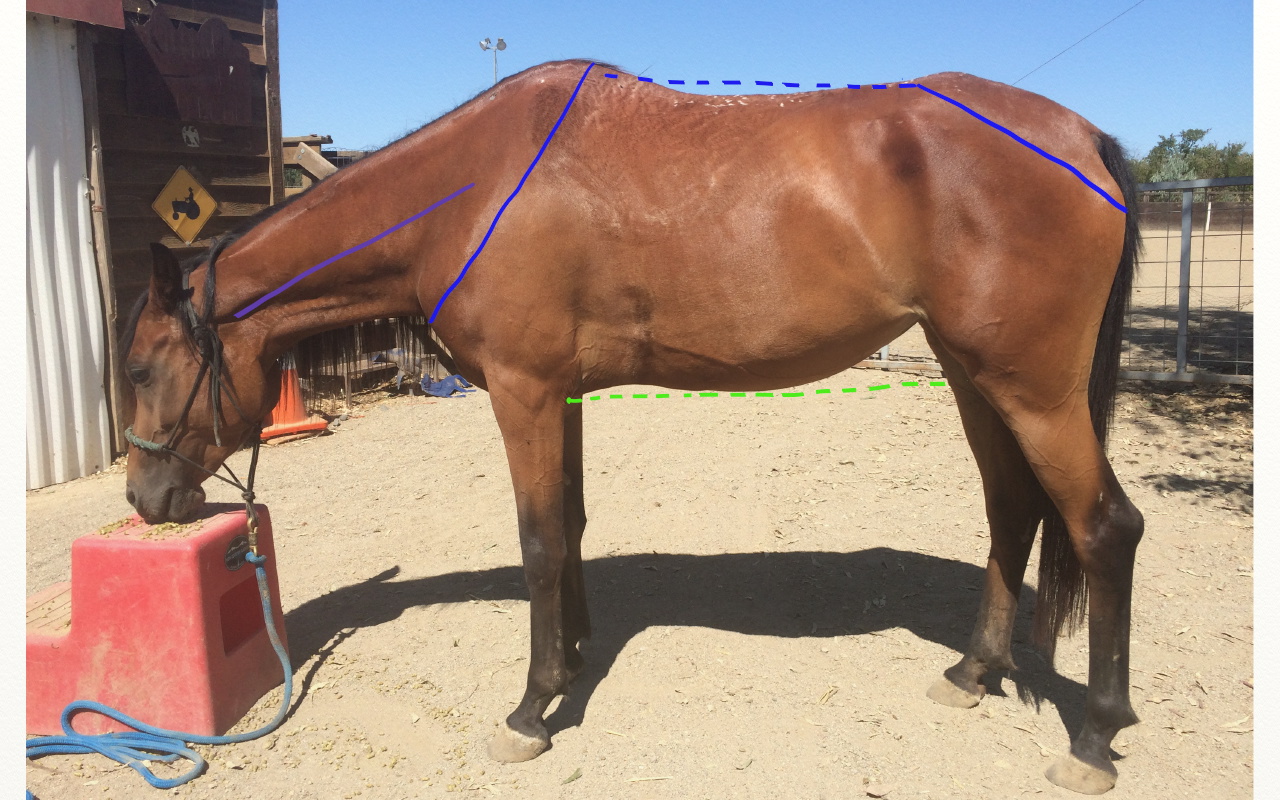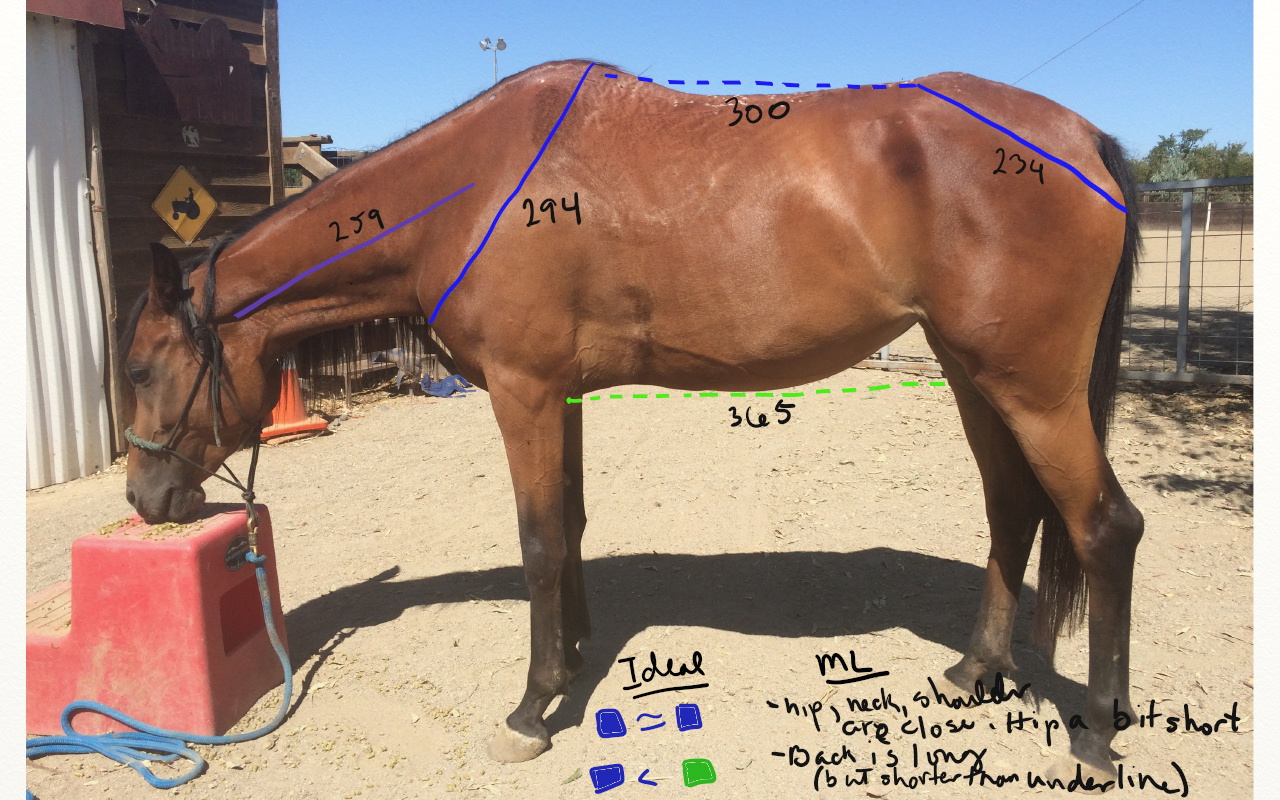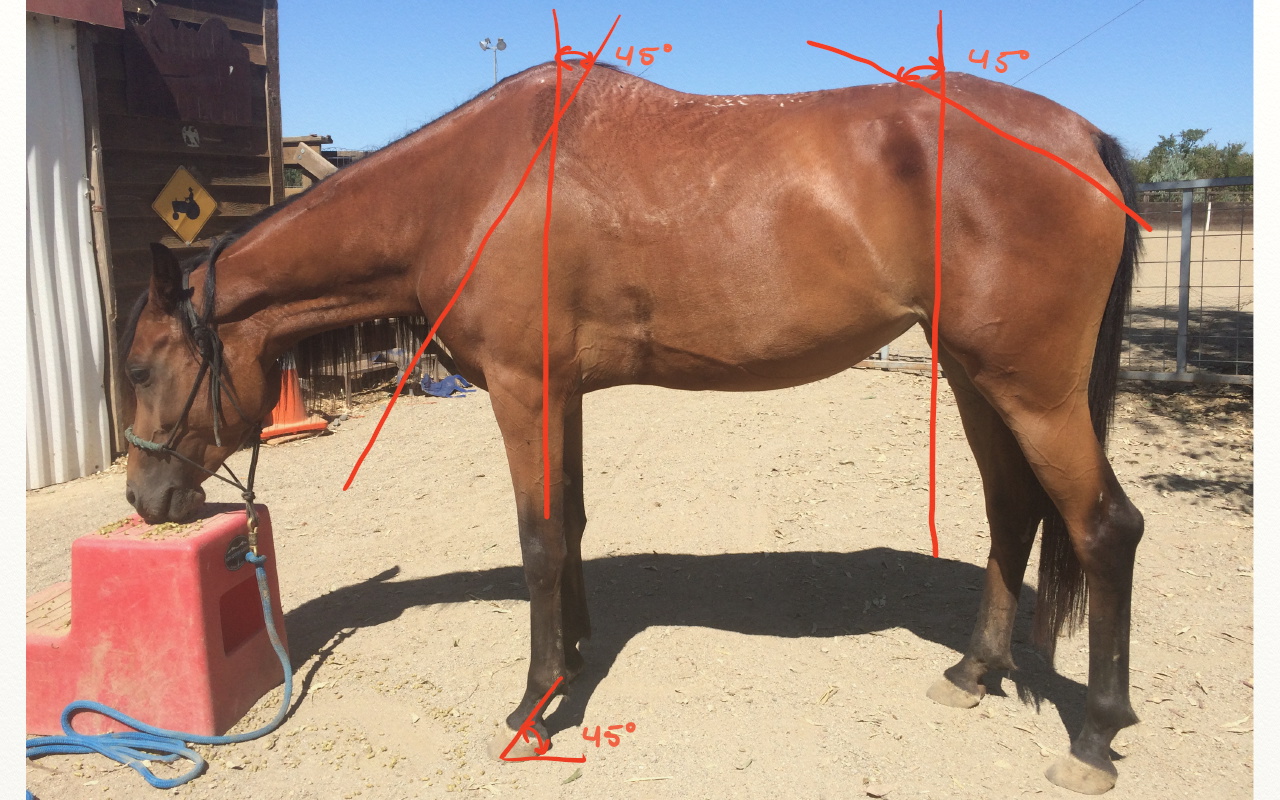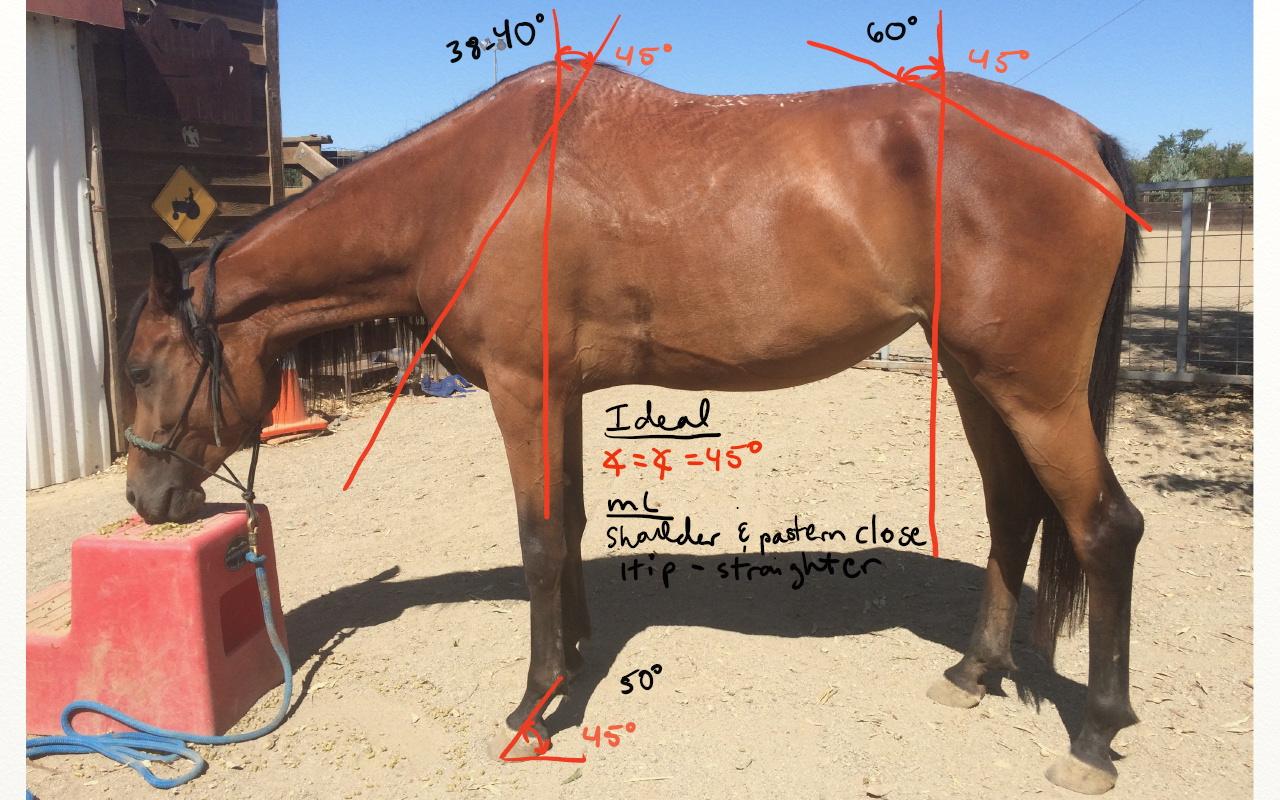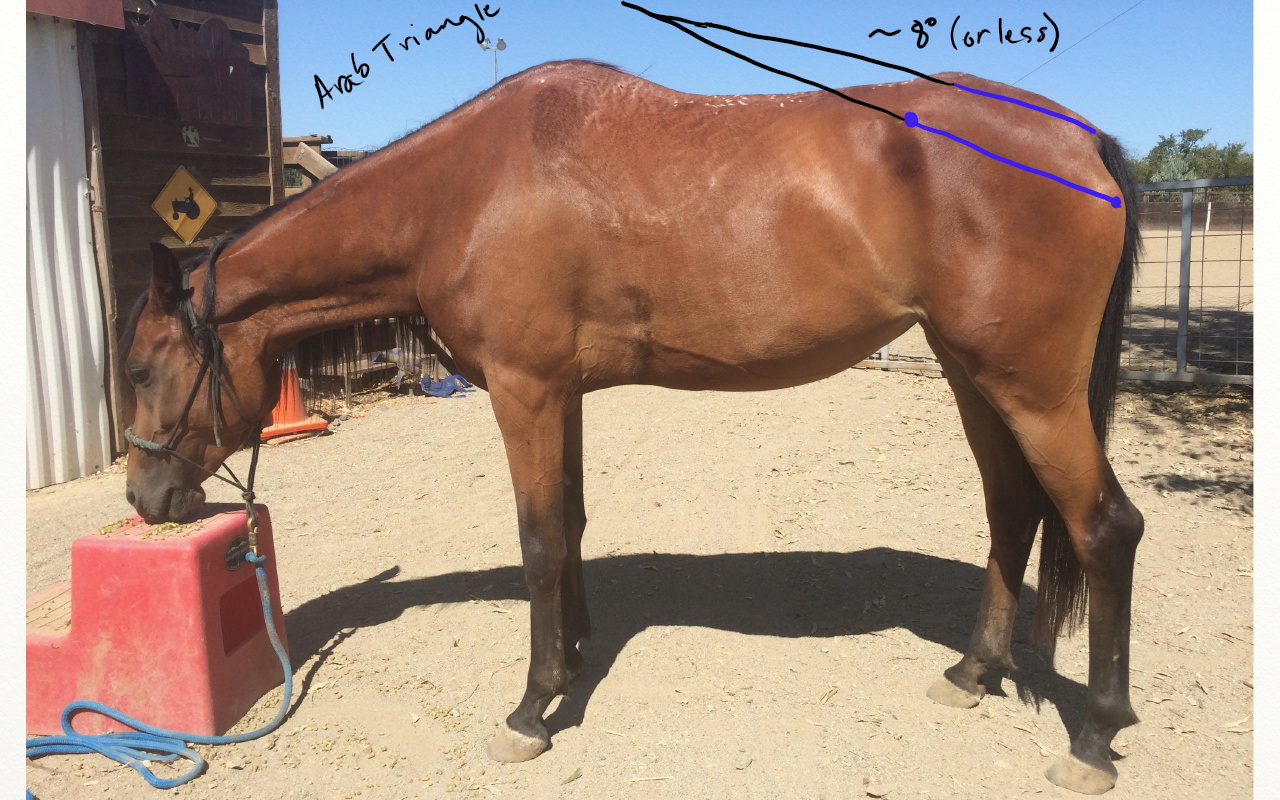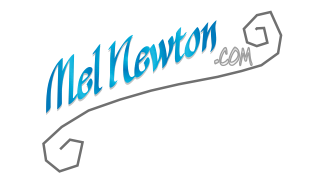The way I see it
| July 27, 2015 | Posted by Melinda under Uncategorized |
“But what matters is what’s between the ears!” is a valid statement….but it’s only part of the picture when looking for your next endurance partner.
I think of pedigree, conformation, and “what’s between the ears” as three legs of a stool that make up our endurance horses. Nothing can predict the future when it comes to soundness, longevity, and future performance of our endurance partner, but being able to evaluate conformation is another tool in that toolbox when trying to choose between several prospects that you are plunking down cold hard cash for.
Some caveats before we begin
I’m not an “arab conformation” expert (or any particular breed expert) and I don’t know what will win in the show ring. My chosen sport of endurance emphasizes soundness, especially over time. As a result when evaluating conformation I’m looking at general principles that suggest the horse can efficiently use it’s body and contribute to soundness over the long-term. This type of conformation can apply to variety of breeds.
In fact, while we are throwing the word “expert” around, I’m not a “conformation expert” either. I read a lot about conformation, talk about conformation, and am constantly trying to improve my eye. That doesn’t make me an expert. I have picked up some tricks over the years that I’ve found really helpful and want to share them.
This also isn’t a post about which conformation flaws are better/worse. Every horse is a mixed bag and everyone has an individual preference for what flaws they are willing to accept. This is to help you see how a horse measures against the general “standard” and perhaps help you communicate *why* you like or dislike how a particular horse looks.
—————————————————————————————————————-
As examples I’m going to use my two horses, Farley and MerryLegs. They are closely related and at a glance have the same “look”. I’ve actually walked up to the “wrong” horse in the paddock to halter, and more then once double checked the horse I have on the trail or in the trailer to make sure it’s the “right” one.
However, whenever I really look at them I’m struck how different they are too. In addition to sharing some of the conformation stuff I’ve picked up over the years, I’m looking forward to the opportunity to really dissect what the differences are between the two horses.
Starting with a decent picture is essential. I think the once above of Farley is a good starting point. She’s standing fairly square, the camera is square, the footing is level, and the light is good. My biggest gripe about this picture is that her left front foot isn’t fully weight bearing and is placed a touch too far back.
– We are going to focus on the side view in this post, but I highly recommend pictures of the back and front of the horse too if really wanting to see what the horse looks like conformationally.
*a note about action shots. They are pretty, can provide some information about how a horse moves and uses its body etc, but IMO are not as useful for assessing conformation as a good still shot.
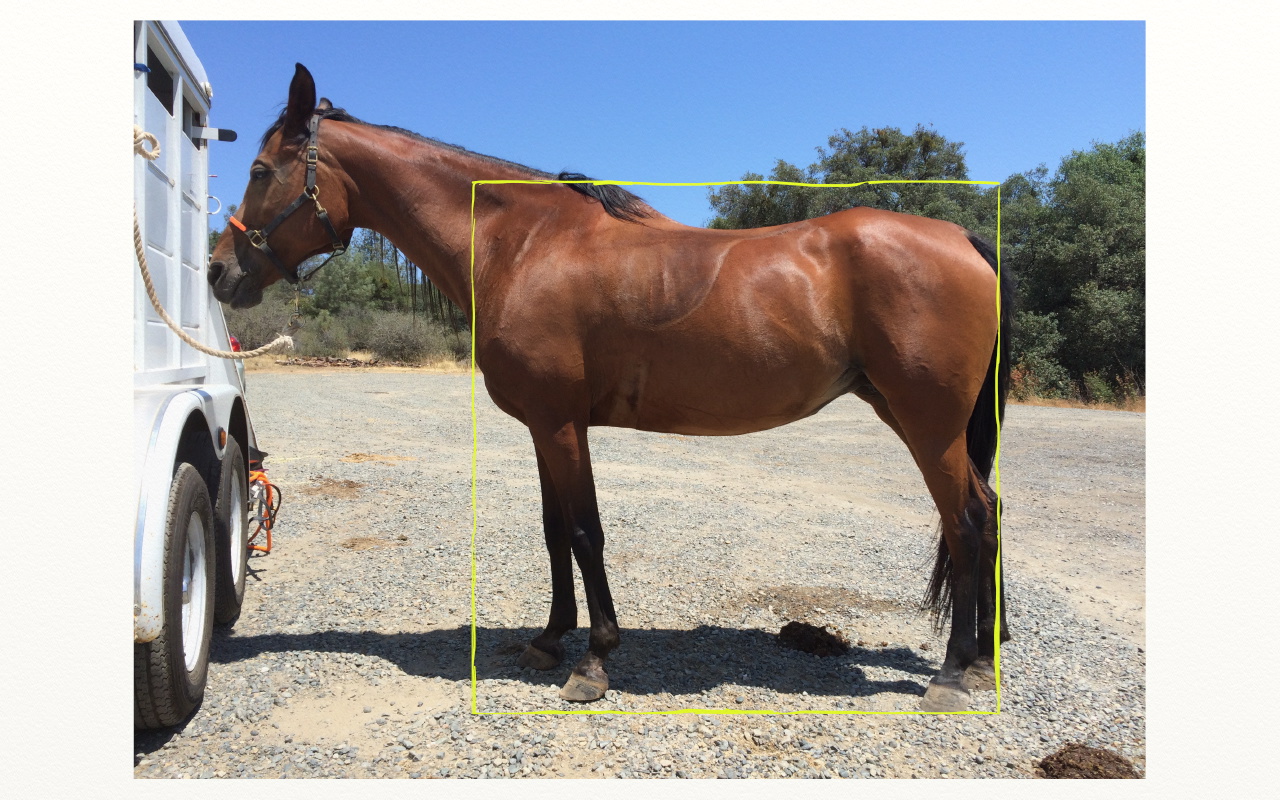
Start with a box like above. Ideally the horse should be box shaped, with a butt that isn’t higher then the wither. Farley looks pretty “boxy” (good!) with a wither higher then her butt (good!) ….but there’s something else going on that might be affecting how our eye is seeing the box.
Farley has a tall wither, which means there’s quite a bit of clearance between the box and her sacrum. First of all the tall wither is affecting the height of our box and hiding the fact that she is slightly longer then she should be for her height. Secondarly just because you have a shark fin wither doesn’t automatically mean you have an uphill build…..more investigation is needed!
For a horse like Farley who has significantly more wither that is throwing me off, I like to look at the “balance line” of the horse. There’s some guessing about where exactly the circle on the neck goes – but it’s in front of the shoulder somewhere in the back and bottom third. Based on this, overall Farley has a nearly level to slightly uphill balance, which is good! We also learn that if we ignore the wither advantage, she’s a little long and rectangular instead of boxy. Why?
Now’s it’s time to look at specific angles and proportions.
There’s 4 that you should be able to draw with your eyes
- neck, shoulder, back, hip
These 4 “lines” should be approximately the same in length.
The green line represents the underline.
The underline should be longer then the topline (represented as the dotted blue line, which is also the length of the back).
How does Farley stack up?
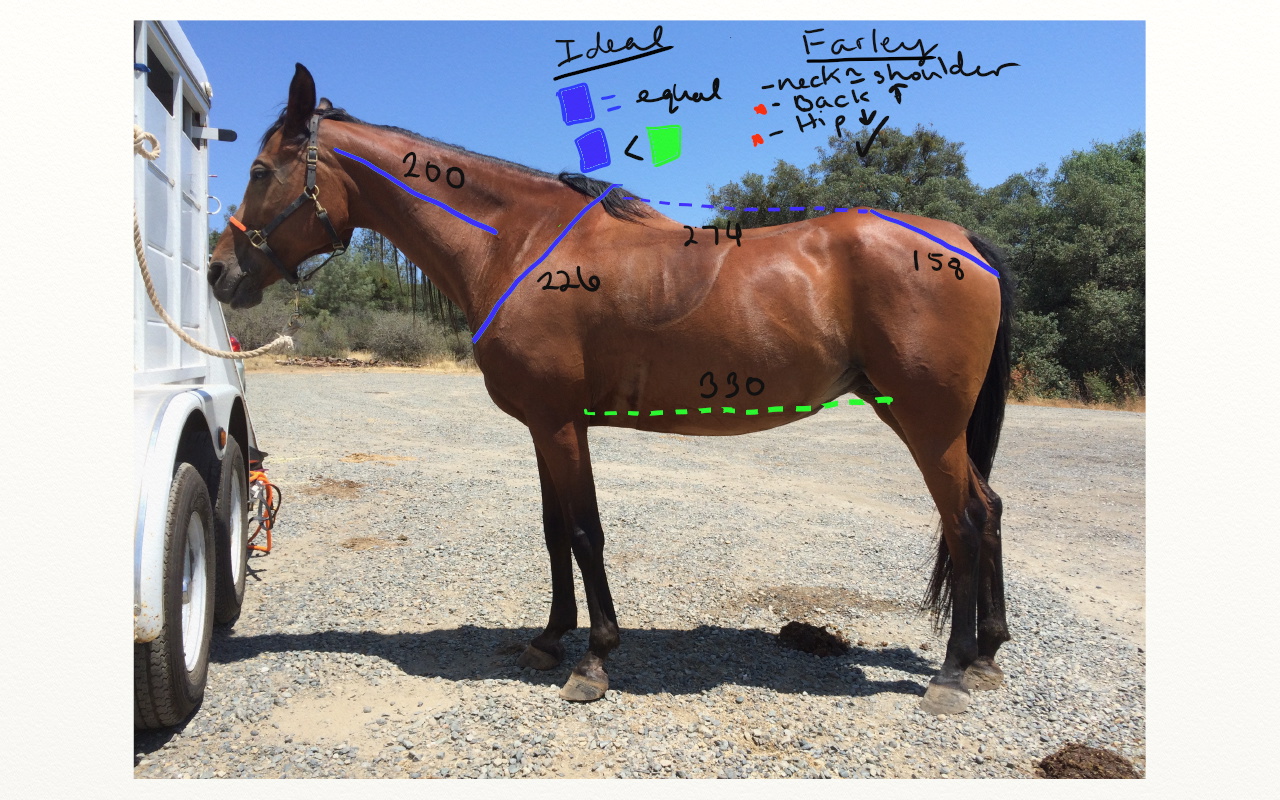
The numbers are in pixels, so that can be compared to eachother, but not converted into actual measurements.
Her neck and shoulder are very close to the same length, which is one reason her front half is pleasing to the eye and appears “balanced”. Her back is too long and her hip is too short compared to her other measurements. Her back length is probably why she’s “too long”. Despite the length of her back, her underline still exceeds her topline, which is good.
There are 3 major angles – shoulder, hip, and pastern. All should be about equal and compared to 45 degrees.
Farley’s shoulder is slightly more sloping then the 45 degrees, and her pasterns measure exactly at 45 degrees.
Here’s some of my personal preference in this area: I prefer horses with a slightly more sloping shoulder then 45 degrees because I feel like it’s gives them more reach and stretch in their stride. Theoretically this means her pasterns should match her shoulder, however I don’t mind pasterns that are right on 45 degrees and thus different then the shoulder, because the pasterns are “wear and tear” joints and I think keeping them honest at a 45 degree angle prevents some of the biomechanical wear and tear in the long run.
If you have having trouble visualizing what 45 degrees looks like without drawing angles on every picture and getting out that protractor, here’s a trick. Extend the line drawn through the pastern until it hits the stifle. A pastern that is ~45 degrees will run through the middle of the stifle. Significantly above or below the stifle means a significant deviation from 45 degrees. Once you have calibrated your eye to that angle, then compare it to the shoulder and the hip and decide whether those angle are greater or less then 45 degrees.
Farley’s hip angle is very steep or “upright”. In fact, you probably noticed this just looking at her, but now you know why! It’s significantly different from 45 degrees (as I’ve noticed most arabs are…although the length of the hip is better matched in other arabs) and significantly differently from her shoulder and pastern.
—————————————————————————————————–
So far our critique of Farley could include:
- Well matched and balanced neck and shoulder, with a shoulder that is a is slightly more sloped and “correct” pastern angles. Her back is long and she has a short, steep hip. Overall she has an uphill build and balance.
An interpretation of our findings could be:
- A long back and short hip could indicate more difficulty bringing her hindquarters underneath herself. Collection, moving efficiently down hill, and how much “power” she can generate with her hind quarters may be negatively affected. Her shoulder probably allows for a lot of reach in her stride.
Little self indulgent side tangent: we are pretty much ignoring legs along with the front and back views since I find people are much more confident at picking out flaws and good things in those areas, so we are missing one of Farley’s stronger traits in this critique…..really really straight correct legs, especially in the front.

One breed difference I have learned about is the “Arab triangle” or “why arabs tails look so funny”. At least to us people that started out in a different breed.
Turns out that if you make two lines from the ishium to the illiel wing (lower line), and a line across the top of the croup (which follows the line of the vertebra) and then measure the angle….you have part of the answer.
In a breed such as a quarter horse these lines run almost parallel and the angle is something like 4 degrees. Most arabs, depending on which line they are out of are about 12 degrees. Farley (as near as I can tell with my imperfect protractor) is about 10 degrees…perfectly arab!
(the other reason arab tails look so funny is that their croups are shorter then other breeds as compared to that bottom line, which makes the tail set higher).
Confession time
Now when I look at horses, my brain tends to do something that more resembles this picture….
(Pssssttttt…do you see my “cheater” line for pastern angle? )
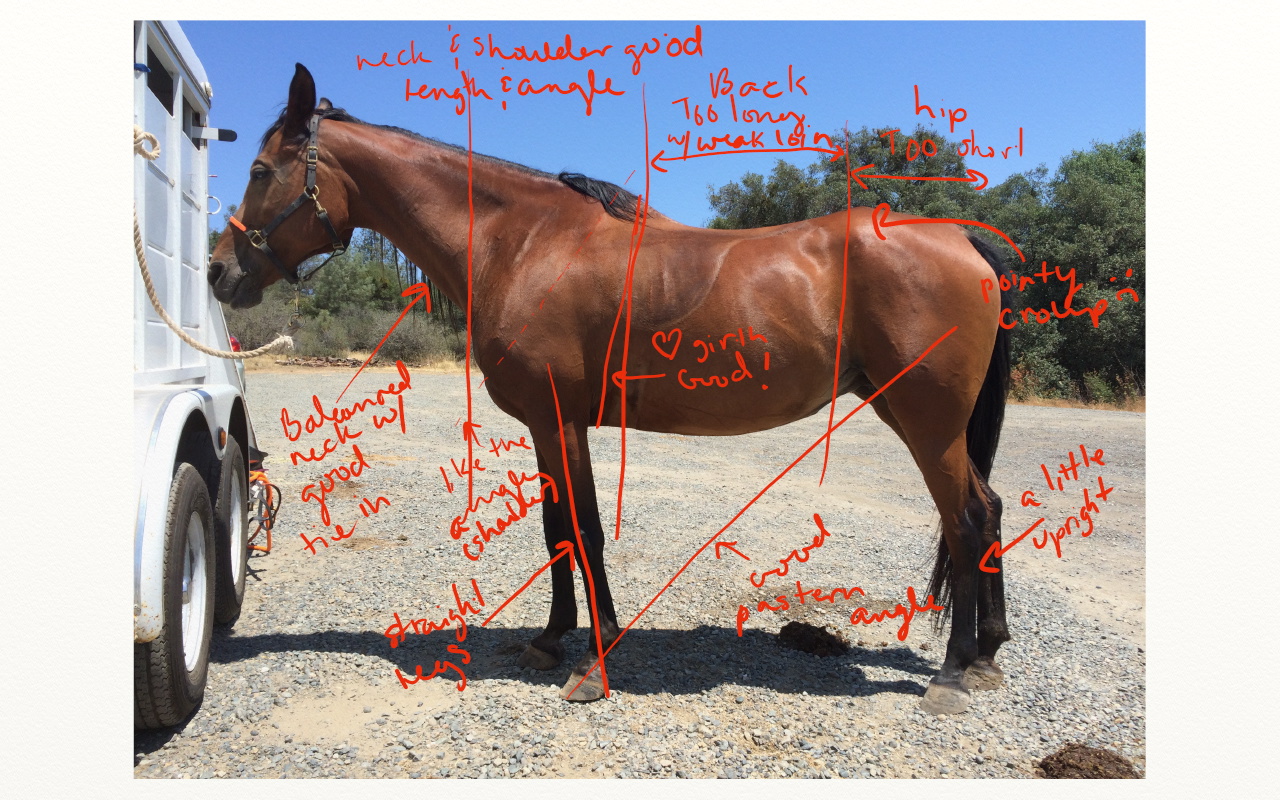
…instead of the carefully drawn lines of our discussion so far. However, understanding the basics like what I’ve gone through so far is how I eventually got to this point, and gave me the vocabulary for being able to describe what I’m seeing to other people, and helped me understand why I like or dislike something.
One of the points of this post is to compare Farley directly to MerryLegs. While we can do that with our carefully worded critiques, wouldn’t it be fun to compare a little more directly?
Above is an “analytical” drawing of Farley’s proportions and conformation that we will come back to shortly!
—————————————————————————————————-
Horse #2: MerryLegs
Now that we are all talking the same language, horse #2 is going to go a little faster.
Step one: evaluate the quality of our picture.
This picture isn’t nearly as good as the one of Farley. The biggest faults is left hind leg is toward the photographer and isn’t fully weight bearing. She’s also being bribed to stand away from me which is causing her neck to not be a natural position like Farley’s. This will cause us fits later on….but it’s the best we have to work with *right now! Her hip also might be slightly towards the photographer which would cause it to look shorter then it otherwise would.
We also need to consider the age of the horse. This is a still growing 3 year old 5 month horse. Especially if you can evaluate several pictures over time of a growing horse you can make an educated guess at what their angles and proportions will be. However, there’s always caveats when offering critiques of youngsters.
*I didn’t want to use an old picture of ML for this
First up is the box. She looks pretty boxy to me!
Her wither is clearly higher then her rump but unlike Farley nothing suggests that the box is being falsely manipulated.
Remember that balance line we drew on Farley to help us determine if she was really uphill? Here’s an example of why picture positioning is important. Because her neck isn’t help in a natural neutral position, where the HECK do I put that little red circle? Using a bit of SWAG (scientific wild ass guessing) I placed it about there, but who am I kidding? Your guess is as good as mine.
Moving on to proportions. Our familiar 4 blue lines plus the green one.
And here’s the numbers!
ML’s shoulder and neck are close. ML’s neck actually comes up a little short compared to her shoulder which surprised me, since I always thought ML’s shoulder was shorter and her neck longer – but I think I was tricked by ML’s neck not being as muscular.
ML’s back is slightly long, but still shorter then her underline.
Her hip is still “too short”, but more in the ball park of where it should be. Here’s where you need to take your picture with a grain of salt. Remember how I told you that ML’s hip could possibly be slightly towards the photographer? That would cause the hip to look shorter then it actually is, which means her hip could be longer more in proportion to her shoulder/neck then it looks here (and in fact, that’s actually true when you see her IRL, even though it’s still a tad short). Remember the limitations of the picture when evaluating the horse!
Angles! A reminder of what we are looking for…
Semi-precise according to the protractor (meaning, probably not that precise).
A more sloping shoulder (told you I was biased towards a sloping shoulder)
An upright hip (actually about the same as Farleys, even though because of the length it doesn’t look quite as long).
Upright pasterns. To double check my protractor measurements, I can use my visual cheater line of where the line of the angle bisects the stifle, and I can see that the line would go above the stifle, which helps validate my measurement – the pasterns have a more upright angle then “ideal”.
Here’s a look at ML’s “Arab Triangle”
All I can say is that it’s less then Farley’s – The lines are more parallel which makes it hard to measure since I’m freehand drawing all these lines. *sigh*. Since her croup is longer and slopes more then Farley’s (matches the bottom angle), this is why her tail is set lower then Farley’s, even though they have almost identical hip angles.
ML’s critique?
- Fairly balanced neck, shoulder and hip with a back that is slightly long. Neck cannot be fully evaluated in these pictures. Upright pastern angles, at least in the front, with a sloping shoulder. Hip is more upright then ideal. Appears to be “uphill” balanced with wither slightly higher then point of croup.
Lastly we need an “analytical drawing” similar to Farley’s so we can compare the horses side by side.
Now for the fun part!
Here’s Farley.
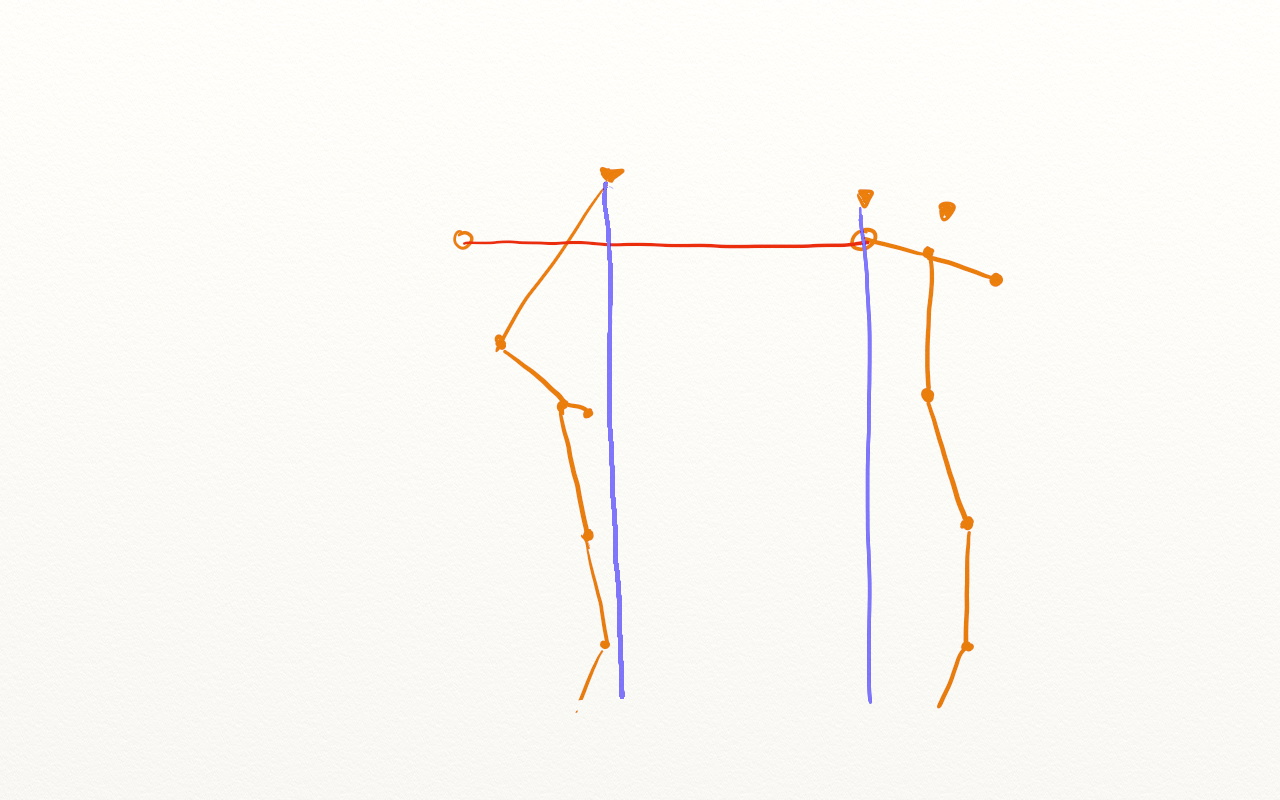
Here’s ML (while reminding you that the balance line is based on a bit of SWAG)
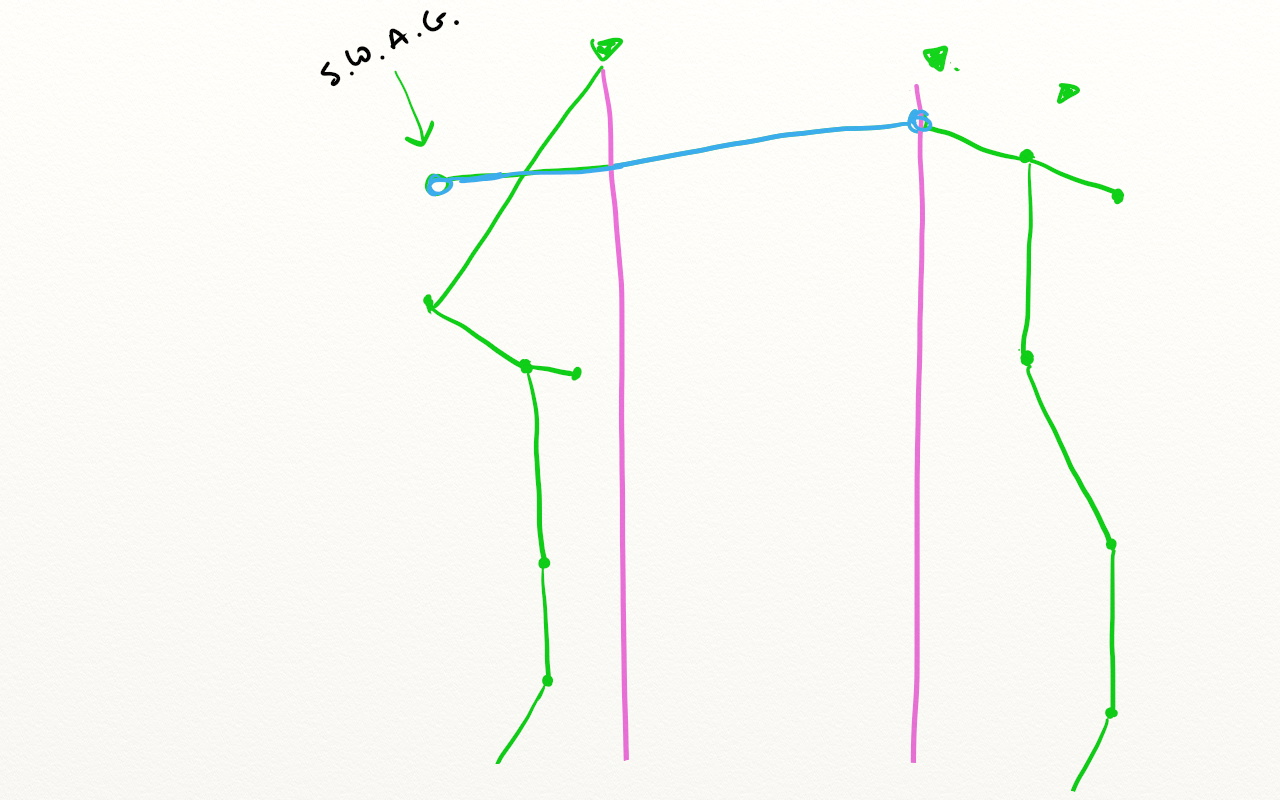
When we stack them on top of each other, what do we get?
(For this I changed ML’s colors to the greyish dull so that you could tell the horses apart more easily)
(As a reference point I chose to line up their withers)
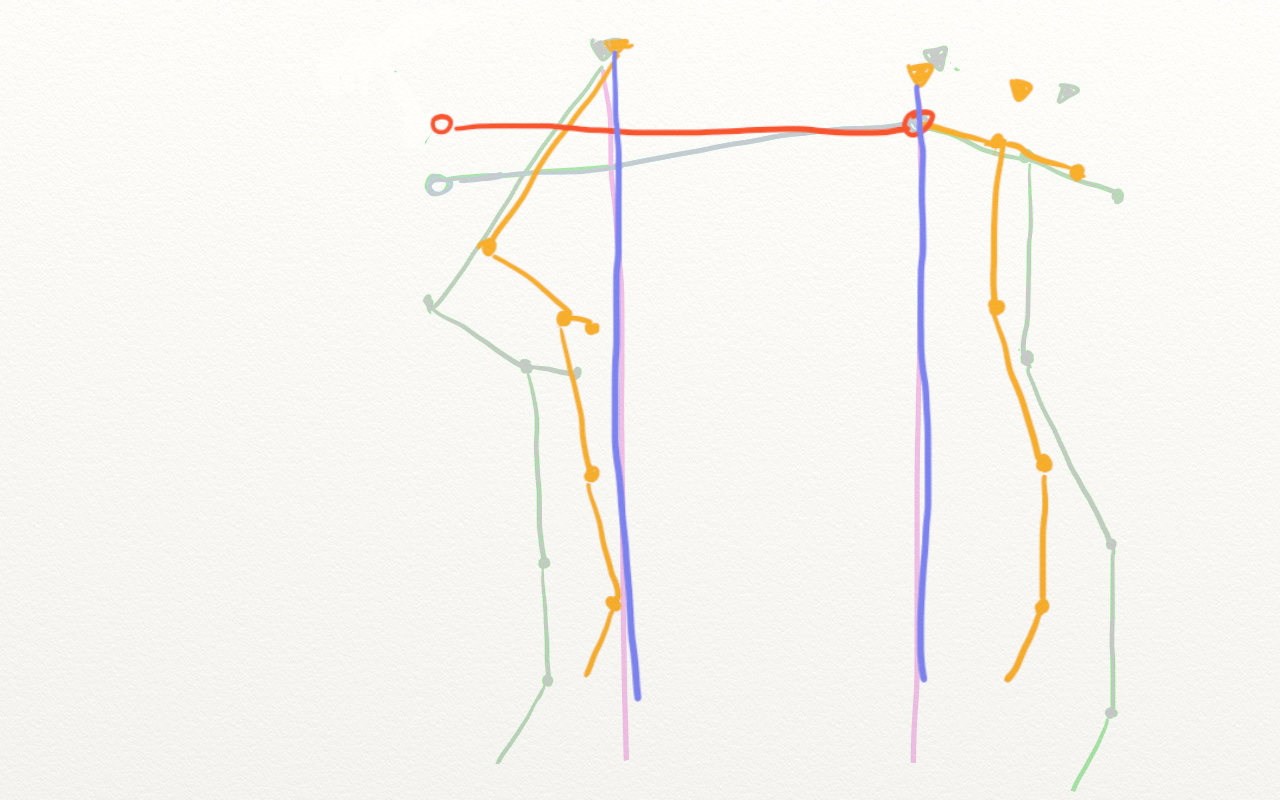
Here’s what I see:
- Their shoulder and hip angles are REMARKABLY similar. More then I thought.
- ML is definitely taller. Look how much longer the greyish lines reach down!
- Their torsos are the same length – look how well their croups and withers match up.
- Look how much longer ML’s hip is.
- I don’t know what to make of my SWAG balance line so I’m ignoring it until I have better information (ie a better picture).
Bottom line: ML has a longer hip and shoulder and about the same length back as Farley.
Ok ok ok. The two horses are more similar than I thought they would be. But my next question is…..what about accounting for the fact that ML is a bigger horse? She was 15.1 hands at my last measurement, and although Farley is a bit shy of 14.3, I think we can agree that her big ‘ole wither has something to do with that. What if both horses were closer to the same size? How does that change things?
Here’s the same image, with ML scaled down proportionally to Farley’s height. (with labels to remind you who is who)
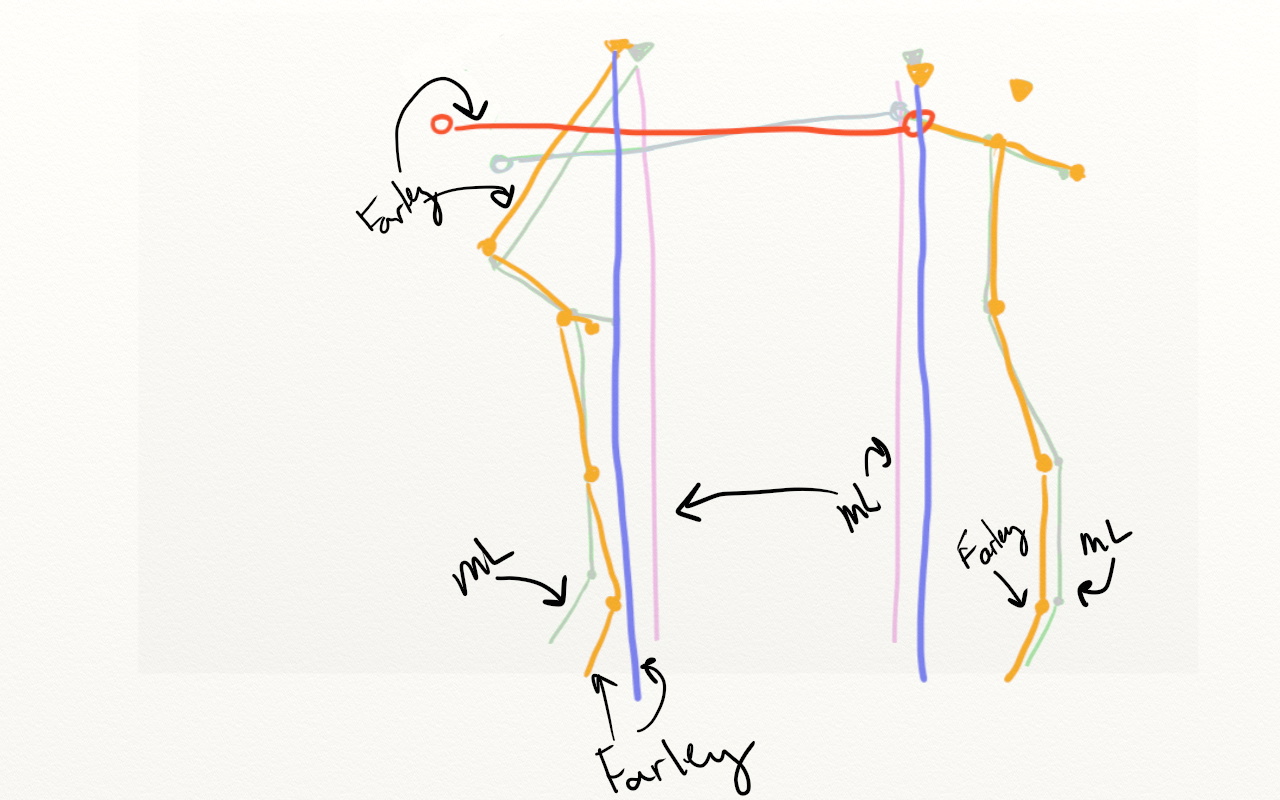
Here’s what I see.
- If ML was less of MerryLEGS and more like MerrySHORT (VerryShort? Bwhahahaha), the horses would be darn near identical horses except ML’s back and torso would be shorter (the pink lines are between the blue lines), Her croup is higher and more level with her withers, and ML has a bit more angle to her hind leg (which is good).
- In a nut shell, ML improves on some of Farley’s biggest conformation flaws (as they came from the same breeding program, isn’t that the point of multiple generations of breeding? Improvement?)
Huh. What I learned today:
- More alike then I thought when I look past the youth, muscle/conditioning, and height.
The “difference” I see IRL probably have more to do with how “curvy” Farley’s back is, which tends to highlight wither height, as well as things like ML’s head being smaller and tail set being lower.
These differences don’t make it into the analytical drawings, but affect the overall “picture” of the horse. Farley is also much more substantial with bigger bone, bigger hooves, and a bigger rib cage – which given time ML might develop. Only time will tell!
